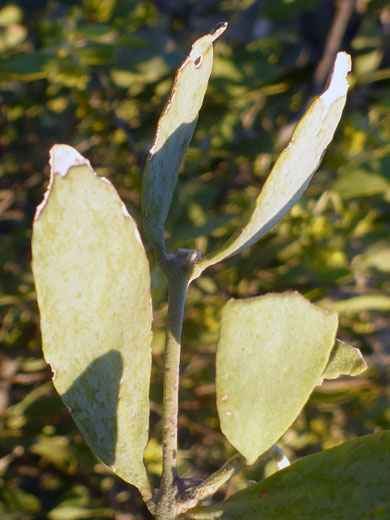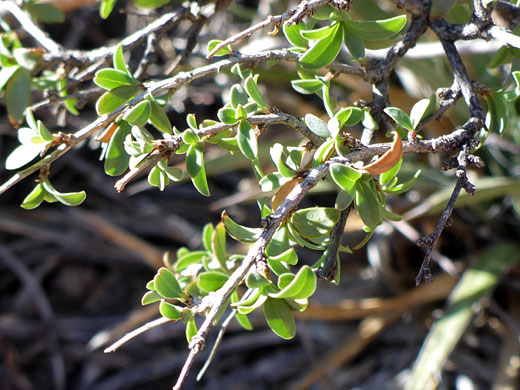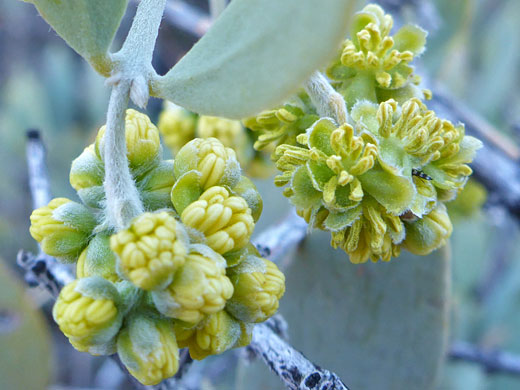Common name:
Jojoba
Family:
Scientific name:
Simmondsia chinensis
Main flower color:
Range:
Arizona and southern California, plus small areas in Utah and New Mexico
Height:
Up to 6 feet
Habitat:
Chaparral, desert plains and slopes, creosote bush scrub, coastal bluffs
Leaves:
Opposite, dull greyish-green, ovate to oblong, up to 2.1 inches long and 1.2 inches wide
Season:
February to May
Simmondsia chinensis, the only species in the whole simmondsiaceae family, is a densely-branched, evergreen shrub of desert regions, most widespread in central Arizona and southern California. Leaves are dull in color, leathery of texture, relatively thick and essentially hairless, blunt-pointed at the tip. Branches are woody, with smooth bark.
Plants are dioecious, bearing male or female flowers on stalks of up to 0.7 inches. Male flowers are pale green, with from eight to 12 stamens (usually ten), female flowers more yellowish, with one pistil, three styles and three stigmas; both flowers have five unfused sepals, and no petals. Male flowers are clustered, and pendent, female flowers usually solitary. Anthers are yellow, the filaments whitish. Flowers, or flower clusters, are attached by hairy stalks, up to 0.8 inches in length.
Plants are dioecious, bearing male or female flowers on stalks of up to 0.7 inches. Male flowers are pale green, with from eight to 12 stamens (usually ten), female flowers more yellowish, with one pistil, three styles and three stigmas; both flowers have five unfused sepals, and no petals. Male flowers are clustered, and pendent, female flowers usually solitary. Anthers are yellow, the filaments whitish. Flowers, or flower clusters, are attached by hairy stalks, up to 0.8 inches in length.
All Contents © Copyright The American Southwest | Comments and Questions | Contribute | Site Map











